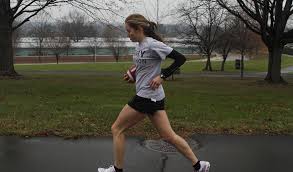


Autoimmune diseases really throw the body for a loop. You’re attacking your own tissues. Your inflammation is sky high. What’s usually good for you—like boosting the immune system—can make it worse. You’ll often restrict eating certain foods that, on paper, appear healthy and nutrient-dense. You take nothing for granted, measure and consider everything before eating or doing it. Sometimes it feels like almost everything has the potential to be a trigger.
Is it true for exercise, too? Must people with autoimmune diseases also change how they train?
First things first, exercise can help. You just have to do it right, or risk incurring the negative effects.
Find Out 2 Excellent Tips for Exercising If You Have Autoimmune Disease
Most autoimmune diseases are characterized by chronic inflammation. Anything that increases that inflammatory load, like too much exercise, will contribute. Overtraining—stressful exercise that you fail to recover from before exercising again—will increase your stress load and increase autoimmune symptoms.

Intense, protracted exercise—think 30-minute high-intensity metabolic workouts, long runs at race pace, 400 meter high intensity intervals—increases intestinal permeability. Elevated intestinal permeability has been linked to rheumatoid arthritis and ankylosing spondylitis, and researchers think it may play a causative role in other autoimmune diseases too.
Yet not exercising might be even worse because exercise increases endorphins. Most think of endorphin purely as “feel-good” chemicals. They’re what the body pumps out to deal with pain, as a response to exercise, and it’s through the endorphin receptor system that exogenous opiates work. Endorphins also play an important role in immune function. Rather than “boost” or “diminish” it, endorphins regulate immunity. They keep it running smoothly. Without endorphins, the immune system begins misbehaving. Sound familiar?

Low-dose naltrexone is a promising therapy for multiple sclerosis and other autoimmune diseases. It works by increasing endorphin secretion, which in turn helps regulate the immune system’s misbehavior. I won’t posit that exercise is just as effective as LDN, but it’s certainly a piece of the puzzle.
This is the same relationship everyone has with exercise. Too much is bad, too little is bad, recovery is required, and intensity must be balanced with volume. The margin of error is just smaller when you have an autoimmune disease.
So how should you exercise then?
To find out how you should exercise if you have an autoimmune disease like rheumatoid arthritis, multiple sclerosis, Crohn’s disease, and Type 1 diabetes, head to this link and read the full article: http://www.marksdailyapple.com/how-to-exercise-with-an-autoimmune-condition/
Here’s also another resource you can look into: http://www.webmd.com/a-to-z-guides/autoimmune-diseases
Here’s a related video for more information:
Are you ready to fight off your autoimmune disease?